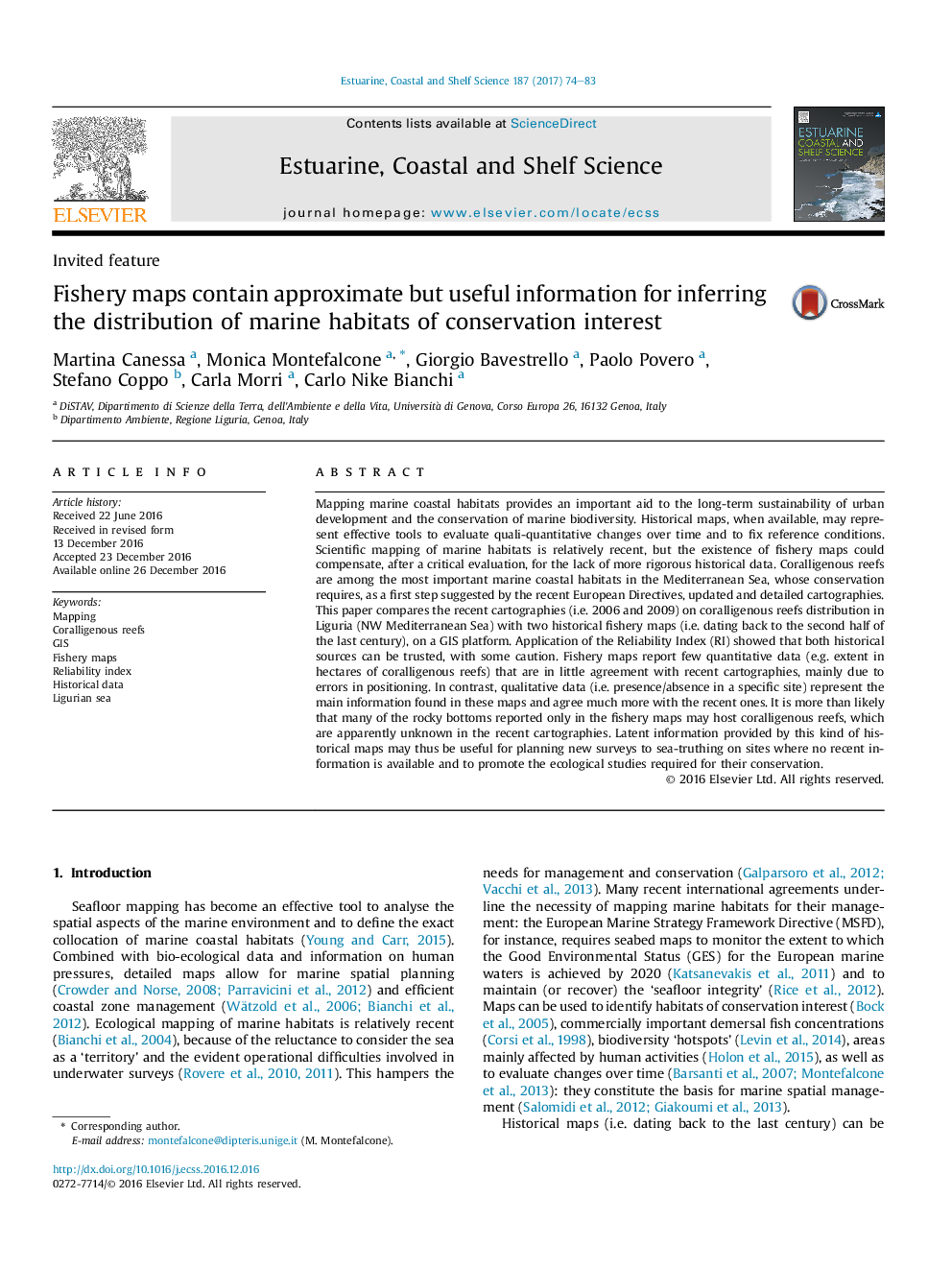| Article ID | Journal | Published Year | Pages | File Type |
|---|---|---|---|---|
| 5765249 | Estuarine, Coastal and Shelf Science | 2017 | 10 Pages |
â¢Fishery maps provide latent information on coralligenous reefs distribution.â¢Reliability of historical maps should be assessed for a critical analysis.â¢Concordance between recent maps is as low as between them and historical.â¢Qualitative data are the main valuable information in historical fishery maps.â¢Recent cartographies resulted sometimes incomplete.
Mapping marine coastal habitats provides an important aid to the long-term sustainability of urban development and the conservation of marine biodiversity. Historical maps, when available, may represent effective tools to evaluate quali-quantitative changes over time and to fix reference conditions. Scientific mapping of marine habitats is relatively recent, but the existence of fishery maps could compensate, after a critical evaluation, for the lack of more rigorous historical data. Coralligenous reefs are among the most important marine coastal habitats in the Mediterranean Sea, whose conservation requires, as a first step suggested by the recent European Directives, updated and detailed cartographies. This paper compares the recent cartographies (i.e. 2006 and 2009) on coralligenous reefs distribution in Liguria (NW Mediterranean Sea) with two historical fishery maps (i.e. dating back to the second half of the last century), on a GIS platform. Application of the Reliability Index (RI) showed that both historical sources can be trusted, with some caution. Fishery maps report few quantitative data (e.g. extent in hectares of coralligenous reefs) that are in little agreement with recent cartographies, mainly due to errors in positioning. In contrast, qualitative data (i.e. presence/absence in a specific site) represent the main information found in these maps and agree much more with the recent ones. It is more than likely that many of the rocky bottoms reported only in the fishery maps may host coralligenous reefs, which are apparently unknown in the recent cartographies. Latent information provided by this kind of historical maps may thus be useful for planning new surveys to sea-truthing on sites where no recent information is available and to promote the ecological studies required for their conservation.
